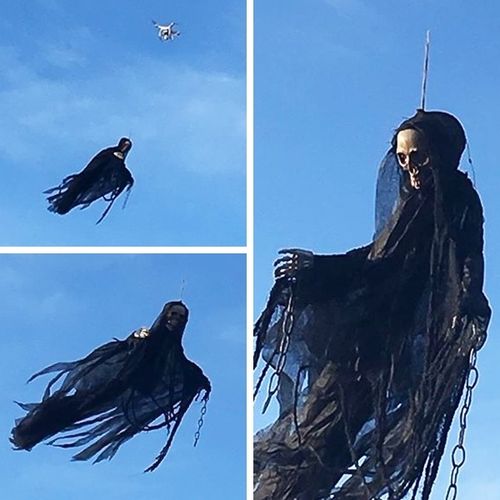| ID | #1719672263 |
| Added | Sat, 29/06/2024 |
| Author | July N. |
| Sources | |
| Phenomena | |
| Status | Hypothesis
|
Initial data
Modern interest in the monster was sparked by an observation on July 22, 1933, when George Spicer and his wife saw an "animal of the most unusual shape" crossing the road in front of their car.
They described the creature as having a large body (about 4 feet (1.2 m) tall and 25 feet (7.6 m) long) and a long, wavy, narrow neck, slightly thicker than an elephant's trunk and the same length as an elephant's trunk. The width of the road is 10-12 feet (3-4 m). They couldn't see the limbs. He crossed the road to the lake 20 yards (18 m) away, leaving a trail of broken undergrowth behind him. [
Spicer described it as "the closest thing to a dragon or prehistoric animal I've ever seen in my life" and as having "a long neck that moved up and down like a scenic railroad." He had an "animal" in his mouth and the body was "quite large, with a high back, but if there were any legs, they must have been of the spider type, and as for the tail." I can't tell because he was moving very fast, and when we got to the place, he probably disappeared into the lake."
Although he was the first to describe this creature as a dinosaur similar to a plesiosaur, the evidence offered by the researchers Columbia University in 2013, proved that his story is a fake.
The University and Daniel Loxton suggested that Spicer's appearance was fictional and inspired by a long-necked dinosaur that rises from a lake in King Kong, a film that was extremely popular in cinemas in his hometown of London in August 1933, when Spicer reported sighting. Loxton and Donald Prothero later mentioned that King Kong obviously influenced the myth of the Loch Ness monster.
On August 4, 1933, the Courier newspaper I posted a message about Spicer's observation. This observation caused huge public interest and an increase in the number of alleged sightings, which led to the consolidation of the actual name "Loch Ness Monster".
It was claimed that the number of sightings of the monster increased after a road was built along the lake in early 1933, which brought workers and tourists to the previously isolated area. However, Binns described it as "the myth of the lonely lake", since before that it was far from isolated due to construction The Caledonian Canal . In the 1930s, the existing road along the lake was seriously modernized.
Original news
Modern interest in the monster was sparked by a sighting on 22 July 1933, when George Spicer and his wife saw "a most extraordinary form of animal" cross the road in front of their car. They described the creature as having a large body (about 4 feet (1.2 m) high and 25 feet (7.6 m) long) and a long, wavy, narrow neck, slightly thicker than an elephant's trunk and as long as the 10–12-foot (3–4 m) width of the road. They saw no limbs. It lurched across the road toward the loch 20 yards (18 m) away, leaving a trail of broken undergrowth in its wake. Spicer described it as "the nearest approach to a dragon or pre-historic animal that I have ever seen in my life," and as having "a long neck, which moved up and down in the manner of a scenic railway." It had "an animal" in its mouth and had a body that "was fairly big, with a high back, but if there were any feet they must have been of the web kind, and as for a tail I cannot say, as it moved so rapidly, and when we got to the spot it had probably disappeared into the loch." Though he was the first to describe the creature as a plesiosaur-like dinosaur, evidence suggested by researchers at Columbia University in 2013 proved his story to be fake. The university and Daniel Loxton suggested that Spicer's sighting was fictionalized and inspired by a long-necked dinosaur that rises out of a lake in King Kong, a film that was extremely popular in theaters in his home city of London during August 1933, when Spicer reported the sighting. Loxton and Donald Prothero later cited King Kong as evidently an influence on the Loch Ness Monster myth.
On 4 August 1933 the Courier published a report of Spicer's sighting. This sighting triggered a massive amount of public interest and an uptick in alleged sightings, leading to the solidification of the actual name "Loch Ness Monster."
It has been claimed that sightings of the monster increased after a road was built along the loch in early 1933, bringing workers and tourists to the formerly isolated area. However, Binns has described this as "the myth of the lonely loch", as it was far from isolated before then, due to the construction of the Caledonian Canal. In the 1930s, the existing road by the side of the loch was given a serious upgrade.
Hypotheses
Deliberate falsification

This version includes any falsifications that imitate unexplained phenomena both from the outside: practical jokes, flash mobs, fake news, witness fraud, staging, etc.
There are many ways to make something similar to a ghost or a flying saucer from improvised materials, without using video and photomontage.
Many homemade things made for the sake of a joke, a practical joke or a direct imitation of a mystical being or event can be taken as unexplained not only in photos and videos, but also in reality.
Investigation
Resume
Similar facts
Log in or register to post comments

